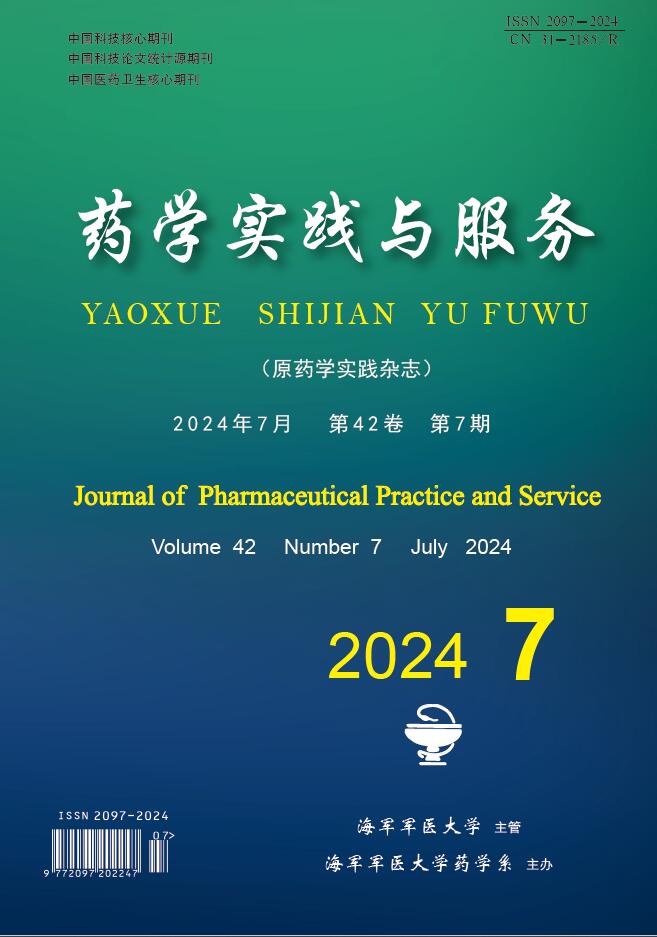-
酸相关性疾病(ARDs)是一类由于胃酸分泌过多,或对胃酸特别敏感而引起的一类消化道疾病的总称,包括胃食管反流病(GERD)、消化性溃疡(PU)、幽门螺杆菌(Hp)感染、功能性消化不良(FD)、卓-艾综合征(ZES)与应激性溃疡(SU)等,其中Hp感染、阿司匹林及其他非甾体抗炎药(NSAIDs)的使用是导致PU的重要病因,GERD与PU也是最常见的ARDs[1-3]。胃酸的生理功能是激活胃蛋白酶原并将其转变为胃蛋白酶,参与蛋白质的消化、减少细菌在胃和十二指肠的定植[4]。然而,胃酸是把双刃剑,其同样介导了胃黏膜损伤的病理过程并且是导致ARDs的潜在原因[5]。因此,抑制胃酸分泌是治疗ARDs的基石[6]。早在1910年,外科医生Schwarz就提出“无酸,无溃疡”的概念,奠定了胃酸在PU发病机制中的基础,使人们对溃疡的认识大幅提高,这种观点盛行了70年,直到20世纪80年代初Hp被发现,由此诞生了“无Hp,无溃疡”的第二次飞跃[7, 8]。然而,抑酸依然是治疗ARDs不可或缺的重要部分。
1915年,自Schwarz提出“无酸,无溃疡”后,美国医生Bertram Sippy开始了抗酸剂治疗PU的工作。在接下来的50年里,抗酸剂被广泛应用,并且在1952年Pickering证明中和酸性胃内容物可减缓PU患者疼痛后得到进一步普及[9]。20世纪70年代末,第一个H2受体拮抗剂(H2RA)西咪替丁的临床应用显著改善了PU的药物治疗并革新了ARDs的疾病管理,使PU择期手术几乎被废除。然而,PU的复发与GERD有限的治疗效果使H2RA依然不能满足临床需求。1988年,第一个质子泵抑制剂(PPI)奥美拉唑批准上市,PPI不仅对PU有效,而且对反流性食管炎(RE)具有显著优于H2RA的治疗效果;PPI在治疗GERD方面取得了显著进步,并将抗反流手术降级到药物治疗无法充分控制的GERD患者,因此成为治疗ARDs的一线方案[6, 10]。尽管PPI在临床中大放异彩,但随着使用数据和经验的积累,PPI的局限性逐渐显露出来:①对酸敏感,因此需制备为肠溶制剂;②本身为前药,在酸性条件下才能活化,因此活性依赖于进食,需餐前30 min服药;③起效慢,需3~5 d才能达到最大抑酸效果;④主要经CYP2C19代谢(奥美拉唑、艾司奥美拉唑、兰索拉唑、泮托拉唑与雷贝拉唑不同程度抑制其活性),药效学及药动学均受其遗传多态性影响并可能导致药物相互作用;⑤半衰期短,难以维持24 h抑酸作用;⑥难以有效改善夜间酸突破(NAB),可能与其只能抑制活化的质子泵有关[6, 10, 11]。为克服上述缺点,临床亟需可替代传统PPI、更快速有效的新型抑酸药,在此背景下诞生了钾离子竞争性酸阻滞剂(P-CAB)。本文主要就国内已上市3款P-CAB的药学特征展开综述。
-
早在20世纪80年代初期,人们就开始了P-CAB的研发,第一个P-CAB—SCH28080,即P-CAB的原型诞生于1982年,随之开发了Linaprazan(AZD0865)、Soraprazan(BY-359)、SK&F96067与CS-526等多种P-CAB,但这些早期P-CAB均因不优于传统PPI及肝毒性而停止发展[10, 12, 13]。截至2023年5月,全球共有5款P-CAB上市,我国已上市3款。瑞伐拉生(Revaprazan,YH-1885)是第一个批准上市的P-CAB(2007年韩国),用于治疗PU而未批准用于GERD,并且其并不优于奥美拉唑[14]。伏诺拉生(Vonoprazan,TAK-438)于2014年12月26日在日本上市,2019年12月18日在我国上市,是第一款真正意义上抑酸作用优于PPI并且几乎避免了NAB的P-CAB[15]。替戈拉生(Tegoprazan,CJ-12420)于2018年7月在韩国上市,2022年4月13日在中国上市,也是继伏诺拉生后研究最为广泛的P-CAB。非苏拉生(Fexuprazan,DWP14012)于2022年7月28日在韩国上市,目前在我国正进行Ⅲ期临床试验。凯普拉生(Keverprazan,KFP-H008)于2023年2月15日在中国上市,是我国首款自主研发的P-CAB[16]。这些P-CAB均为口服剂型,而注射剂也在临床试验中。
-
上述P-CAB在理化性质及作用机制等方面不同于传统PPI,表现出更优的药学参数及临床疗效。早期的P-CAB含有可引起肝毒性的咪唑并吡啶环母核(可增加药物肝脏分布),而后续日本科学家发现了具有磺酰基吡咯母核的高通量筛选命中化合物,并进一步结构优化得到伏诺拉生[6, 17]。韩国科学家设计了具有苯并咪唑母核的替戈拉生,我国自主研发的凯普拉生同样具有磺酰基吡咯母核,结构的优化使药物避免了肝毒性[16, 18]。
-
P-CAB为弱碱性药物,以伏诺拉生为例,pKa=9.3,显著高于传统PPI,更易质子化,可在酸性分泌小管中迅速聚集。在强酸性环境下,易于透膜的非质子化伏诺拉生显著减少,并且其对酸稳定,可高浓度持续存在于分泌小管中,是血浆浓度的一亿倍[19, 20],因此抑酸效果更快速持久,避免了PPI需酸激活而又对酸不稳定的困境。
P-CAB在酸性条件下迅速质子化,通过氢键和静电相互作用与H+, K+-ATP酶可逆结合,使酶停留在E2~P.H+构象,通过抑制其构象转变而无法完成H+、K+交换,使H+无法进入壁细胞的分泌小管中[21]。这种作用方式是K+竞争性的,并且对静息态与活化态的质子泵均有抑制作用[17, 22]。P-CAB的具体作用位点尚不明确,可能与H+, K+-ATP酶的K+结合位点或在该位点附近结合。而在早期针对原型P-CAB—SCH28080的研究中,位点突变分析表明,抑制剂的结合位点与K+结合位点可能并不相同,其结合位点更靠近壁细胞的腔面[23, 24]。新近P-CAB更优的药学参数得益于结构优化。以伏诺拉生为例,其与H+, K+-ATP酶具有高度亲和力(Ki=10 nmol/L,pH=7;Ki=3 nmol/L,pH=6.5)并且解离十分缓慢。分子模拟结果显示,不同于SCH28080(Ki=0.193 μmol/L,pH=6.5),伏诺拉生与酶之间具有额外的相互作用。其中最重要的是伏诺拉生N-甲氨基与酶Glu795形成氢键,其次是伏诺拉生磺酰基与酶Tyr799形成氢键,这些可能是其高亲和力、低解离率并优于先前P-CAB的原因[17, 25]。此外,后续研究表明,伏诺拉生结合在跨膜螺旋区TM4、TM5、TM6之间形成的管腔前庭区,比SCH28080更能有效填充该空间,药物的磺酰基难以通过TM1、TM2环状结构间Asp137与Asn138形成的静电屏障而离开管腔,这也部分解释了伏诺拉生为何解离缓慢且作用持久[22]。
-
虽然ARDs患者本身酸分泌水平不一定异常升高,但抑制胃酸水平对促进与维持黏膜愈合至关重要[26]。这种最适抑酸强度与黏膜愈合最佳条件的数学关系为:PU维持胃内pH>3,18~20 h/d,但对于十二指肠溃疡,进一步增加pH可能不会带来额外临床获益[26];GERD维持胃内pH>4,20~22 h/d,其愈合率与pH及每日维持时间呈正比[27]。因此对于ARDs,影响药物临床疗效的因素不仅取决于抑酸强度本身,还依赖于抑酸持续时间。
P-CAB对H+, K+-ATP酶的抑制呈剂量依赖性,不受pH影响,并且对Na+, K+-ATP酶的IC50远大于H+, K+-ATP酶。3篇独立的基础研究分别报告了相关参数。在对伏诺拉生进行的药效学实验中,pH=6.5的环境下伏诺拉生、SCH28080与兰索拉唑的IC50分别为0.019、0.14、7.6 μmol/L,pH=7.5时分别为0.028、2.5、66 μmol/L[17]。在对替戈拉生进行的药效学实验中,替戈拉生对猪、犬及人H+, K+-ATP酶的IC50分别为0.47、0.29 、0.52 μmol/L,未表现物种特异性[28];在对凯普拉生进行的药效学实验中,pH=6.5的环境下凯普拉生、伏诺拉生与兰索拉唑的IC50分别为0.029、0.02、7.51 μmol/L,pH=7.5时分别为0.061、0.029、64.95 μmol/L,同时该研究还报道凯普拉生与伏诺拉生的Ki分别为4 nmol/L与3 nmol/L[29]。上述研究中的量效关系曲线均表明这3种P-CAB具有剂量依赖性,这些研究还提示,新型P-CAB的抑酸作用不仅强大且不受环境pH的影响。此外,伏诺拉生对hERG钾离子通道的IC50为4.8 μg/ml,是H+, K+-ATP酶(8.9 ng/ml即0.019 μmol/L)的539倍;替戈拉生对hERG的IC50>16.8 μmol/L,是H+, K+-ATP酶(0.52 μmol/L)的30余倍,因此它们具有良好的心脏安全性[18]。
P-CAB抑酸迅速、强且持久。日本的一项I期两阶段交叉试验显示,连续7 d口服伏诺拉生20 mg/d、艾司奥美拉唑20 mg/d或雷贝拉唑10 mg/d,第1天受试者24 h胃内pH>4持续时间占比(HTR)分别为71.4%(伏诺拉生)vs 23.9%(艾司奥美拉唑)、84.2%(伏诺拉生)vs 26.3%(雷贝拉唑);第7天pH4 HTR分别为85.8%(伏诺拉生)vs 61.2%(艾司奥美拉唑)、93.8%(伏诺拉生)vs 65.1%(雷贝拉唑);此外,伏诺拉生组第1天与第7天的胃内pH曲线基本重叠,提示可达到首剂全效[30]。在另一项日本的I期随机双盲安慰剂对照试验中,pH4 HTR随伏诺拉生剂量的增加而增加(连续7 d口服伏诺拉生10、15、20、30、40 mg/d,第1天24 h pH4 HTR分别为38.4%、55.4%、63.3%、80.8%、85.3%,第7天24 h pH4 HTR可达63.3%、68.5%、83.4%、95.2%、100.0%),表明其抑酸作用呈剂量依赖性[31]。在韩国的一项I期试验中,50 mg替戈拉生或200 mg瑞伐拉生连续口服7 d,第1天24 h pH4 HTR分别为54.5%与25.1%;第7天pH4 HTR分别为68.2%与25.3%[32]。另一项韩国的I期三阶段交叉试验比较了单剂量口服(约晚10点)50 mg替戈拉生、20 mg伏诺拉生或40 mg艾司奥美拉唑的夜间抑酸效果,结果显示12 h pH4 HTR分别为66.0%、60.5%与36.1%,并且替戈拉生在1 h左右达到胃内pH>4,远早于另外两者(均约4 h),提示其在改善NAB中具有良好潜力[33]。还有一项韩国的I期随机单剂量交叉试验比较了替戈拉生与右兰索拉唑夜间抑酸效果,作为可能改善NAB的最强PPI,60 mg双相缓释的右兰索拉唑24 h pH4 HTR与50 mg替戈拉生相当(60.55% vs 58.55%),而替戈拉生100 mg与200 mg可达到70.07%与81.73%,并且夜间12 h pH4 HTR替戈拉生50 mg远高于右兰索拉唑(65.11% vs 37.78%);此外替戈拉生各剂量组均在2 h内达到pH>4,右兰索拉唑大约7 h,这些结果提示,替戈拉生不仅具有剂量依赖性,还可有效改善NAB[34]。目前有关凯普拉生的研究有限,根据国家药品监督管理局的数据,连续7 d口服凯普拉生20 mg/d,第7天24 h pH4 HTR为98.3%[16]。
-
P-CAB对酸稳定,不需制备成肠溶制剂,生物利用度数据暂缺,口服吸收迅速并可选择性聚集于壁细胞中,且由于pKa较大,易于保持质子化状态而难以透出细胞膜。伏诺拉生连续给药7 d达峰时间(Tmax)为1.5~2 h,半衰期(t1/2)为5.7~8.8 h,在10~40 mg剂量范围内呈线性药动学,提示不发生蓄积;此外其药动学参数在日本与英国受试者中相似[31]。体外实验显示伏诺拉生血浆蛋白结合率为85.2%~88.0%,但由于其血浆药物浓度很低,因此即使远高于治疗浓度可能也难以使血浆蛋白饱和[15]。单剂量口服替戈拉生Tmax为0.5~1.5 h,t1/2为3.7~5.4 h,在50~400 mg剂量范围内呈线性药动学[35]。一项针对我国健康受试者的研究表明,单剂量口服替戈拉生Tmax为0.5 h,t1/2为3.9~4.6 h,在50~200 mg剂量范围内呈线性药动学;100 mg连续给药10 d Tmax为1.0 h,t1/2为7.1 h,并且药物无蓄积。此外,本研究未发现基于性别的实验差异[18]。20 mg凯普拉生连续给药7 d Tmax为1.25 h,t1/2为6.2 h,血浆蛋白结合率97.7%~98.7%[16]。在食物或高脂饮食条件下,伏诺拉生药时曲线下面积(AUC)与峰浓度(Cmax)轻度增加,Tmax显著延长,但食物未显著影响药物暴露[36];替戈拉生AUC不变(或轻度减少)、Cmax显著减少,Tmax显著延长[37, 38];凯普拉生AUC与Cmax增加,Tmax无显著改变[16];三者t1/2均未显著改变。并且两项韩国的研究均表明,食物不影响替戈拉生24 h pH4 HTR[37, 38],以上研究提示,服用伏诺拉生或替戈拉生可不考虑进食的影响,而食物是否影响凯普拉生的药效学表现尚不清楚[39]。
P-CAB主要经CYP3A4代谢,其中对伏诺拉生的代谢途径研究最为明确。除CYP3A4外,伏诺拉生部分经CYP2B6、CYP2C19、CYP2D6及非微粒体酶SULT2A1代谢,生成的4种主要代谢产物M-I、M-Ⅱ、M-Ⅲ与M-Ⅳ-Sul无药理活性[40, 41]。伏诺拉生口服后67%经尿液、31%经粪便排泄,而原型药物只占尿液和粪便的8%与1%[15]。除CYP3A4外,替戈拉生部分经CYP2C19代谢,M1(去甲基替戈拉生)为其共同代谢产物,活性比替戈拉生少10倍(IC50:0.53 μmol/L vs 6.19 μmol/L),考虑只检测到约6.8%的替戈拉生转化为M1,因此M1可能无临床意义[18, 42, 43]。一篇基于生理药动学模型的研究显示,91.8%的替戈拉生经肝代谢,其中71.6%经CYP3A4,20.2%经CYP2C19,而CYP2C9、CYP2C8、CYP2E1及CYP2D6基本未参与其代谢过程[43]。口服替戈拉生只有<6%经肾排泄[35]。体外实验显示,凯普拉生主要经CYP3A4代谢,在健康受试者中有54.4%经尿液、44.5%经粪便排泄[16]。
一项日本的I期研究显示,伏诺拉生的药动学参数不受CYP2C19基因型影响[44],另一项韩国的I期研究显示,伏诺拉生与替戈拉生在CYP2C19快、中、慢代谢型受试者中的夜间抑酸效果相似,提示两者的药效学表现同样不受CYP2C19遗传多态性影响[33]。
目前尚缺乏P-CAB在孕妇、哺乳期妇女、儿童、老年人及肝肾功能不全患者中的研究,因此特殊人群需慎用。有限的数据显示,在Child-Pugh分级A、B、C的肝功能损害患者中,伏诺拉生Cmax与AUC与健康受试者相比可分别增加1.2~1.8与1.2~2.6倍;轻、中、重度肾功能损害及终末期肾病患者Cmax与AUC可分别增加1.2~2.8与1.3~2.4倍[15]。
-
研究表明,伏诺拉生剂量与时间依赖性地抑制CYP2B6、CYP2C19与CYP3A4/5活性,对P-gp也具有抑制作用[15]。我国学者的研究也在体外与动物实验中证实伏诺拉生可抑制CYP3A4、CYP2C9、CYP2D6与CYP2B6的活性,而对CYP1A2与CYP2E1无作用[45]。有限的数据显示,替戈拉生对OATP1B1具有抑制作用(伏诺拉生无);同时,替戈拉生对CYP3A4的IC50高于伏诺拉生(>30 μmol/L vs 29 μmol/L),并且对CYP1A2、CYP2C9、CYP2D6与CYP2C19无作用[46, 47]。体外实验显示,凯普拉生可抑制CYP2C9、CYP2C19与CYP3A4活性,而不抑制P-gp与BCRP,并且也不是OATP1B1、OATP1B3、OAT1、OAT3、OCT2、MATE1与MATE2-K等多种转运体的底物[16]。
虽然P-CAB血浆药物浓度远低于对CYP酶系的IC50[15, 46],但在临床试验中依然显示出与其他药物的相互作用。一项日本的I期试验比较了伏诺拉生与艾司奥美拉唑对氯吡格雷或普拉格雷抗板作用的影响,结果显示伏诺拉生对二者抗板作用的抑制程度显著高于艾司奥美拉唑,并且其源于伏诺拉生对CYP3A4及CYP2C19的抑制[48],然而体外实验显示这种相互作用可能并不由CYP酶系介导[49, 50]。一项韩国的I期随机交叉试验在CYP2C19快代谢受试者中对比了替戈拉生、伏诺拉生与艾司奥美拉唑对CYP2C19的影响,结果显示伏诺拉生与艾司奥美拉唑可显著抑制CYP2C19的底物Proguanil代谢为Cycloguanil,其中艾司奥美拉唑组程度更高,而替戈拉生并不影响这种代谢过程,提示其可与经CYP2C19代谢的药物联用[51]。
在评价伏诺拉生联合阿莫西林/克拉霉素或阿莫西林/甲硝唑三联方案的I期研究中,伏诺拉生AUC0-12与Cmax分别增加了0.85与0.87倍,CYP3A4强抑制剂克拉霉素AUC0-12与Cmax分别增加了0.45与0.64倍,而其代谢产物羟基克拉霉素AUC0-12与Cmax分别增加了0.86与0.98倍,提示伏诺拉生并未抑制克拉霉素的代谢过程,克拉霉素暴露的增加可能源于胃内pH的改变;该三联方案的药物相互作用可能不具有临床意义并且受试者耐受良好,此外未观察到阿莫西林或甲硝唑在两种三联方案中的相互作用52]。在替戈拉生/阿莫西林/克拉霉素三联方案中,替戈拉生AUCτ与Cmax分别增加了1.7与1.2倍,而克拉霉素无显著变化;此外,克拉霉素还可能通过抑制P-gp增加替戈拉生的生物利用度,但替戈拉生是否为P-gp的底物尚不清楚[53]。在基于凯普拉生的三联方案中,凯普拉生与克拉霉素药物暴露的增幅远低于伏诺拉生与替戈拉生[16]。一项韩国的I期研究评价了替戈拉生/甲硝唑/四环素/次枸橼酸铋四联方案的相互作用,与单药相比,联合给药后替戈拉生AUC0-12与Cmax分别降低了22%与25%,四环素AUC0-6与Cmax分别降低了38%与36%,铋剂AUC0-6与Cmax分别增加了55%与38%,甲硝唑的药动学行为未发生改变,四联方案可能使替戈拉生的吸收减少,这种原因目前尚不清楚;胃内pH的升高使铋剂的溶解性及生物利用度增加,因此这种相互作用源于替戈拉生的药效学行为;铋剂溶解性增加可能导致其与四环素形成更多的螯合物,因此使四环素的吸收减少;该四联方案中的药物相互作用可能无临床意义并且受试者耐受良好[54]。
作为最常与传统PPI同时开具的处方之一,NSAIDs与P-CAB的药物相互作用同样得到了评价。伏诺拉生与低剂量阿司匹林、洛索洛芬钠、双氯芬酸钠或美洛昔康合用后药动学未发生显著改变[15]。与此相似,替戈拉生的药动学参数未受萘普生、醋氯芬酸或塞来昔布影响,但醋氯芬酸与塞来昔布的Cmax显著增加而AUCτ未显著改变,这种相互作用可能源于替戈拉生的药理作用,胃内pH升高使这两种弱酸性药物的溶解度增加,但程度不足以使AUC增加,因此这种改变可能不具有临床意义并且受试者耐受良好[55]。另一项韩国的I期研究显示伏诺拉生可能通过抑制肠道CYP3A4显著增加阿托伐他汀的药物暴露,并且受试者高胃泌素血症发生率显著增加,而替戈拉生未引起上述情况;该研究还证实伏诺拉生与替戈拉生均不影响UGT1A1与UGT1A3的活性,并且替戈拉生在治疗剂量下对OATP1B1不具有抑制作用[46]。
-
作为新型抑酸药,P-CAB独特的结构及新颖的作用机制赋予其优于传统PPI的药学特征:活性不依赖于进食、起效快(首剂全效)、个体差异小、抑酸作用强而持久等,这些优越性使P-CAB成为ARDs药物治疗的新选择,但其长期安全性及有效性尚需更多研究证实。
Progress on pharmaceutical characteristics of potassium-competitive acid blocker
doi: 10.12206/j.issn.2097-2024.202306040
- Received Date: 2023-06-27
- Rev Recd Date: 2024-03-14
- Available Online: 2024-07-16
- Publish Date: 2024-07-25
-
Key words:
- potassium-competitive acid blocker /
- acid-related diseases /
- progress
Abstract: As a new class of acid inhibitors, potassium-competitive acid blocker(P-CAB) inhibits the conformational transition of H+, K+-ATPase with subsequent suppression of H+, K+ exchanging by binding reversibly near the K+ binding site of H+, K+-ATPase, which results in the inhibition of gastric acid secretion in a K+-competitive manner. The unique structure and novel mechanism of P-CAB contribute to the pharmaceutical characteristics superior to other PPIs, making it a new alternative for acid-related diseases(ARDs). Progress on pharmaceutical characteristics of P-CAB were reviewed in this paper.
| Citation: | WANG Yaozhen, XU Can, LV Shunli, TIAN Jing, ZHANG Dongwei. Progress on pharmaceutical characteristics of potassium-competitive acid blocker[J]. Journal of Pharmaceutical Practice and Service, 2024, 42(7): 278-284. doi: 10.12206/j.issn.2097-2024.202306040 |








 DownLoad:
DownLoad: